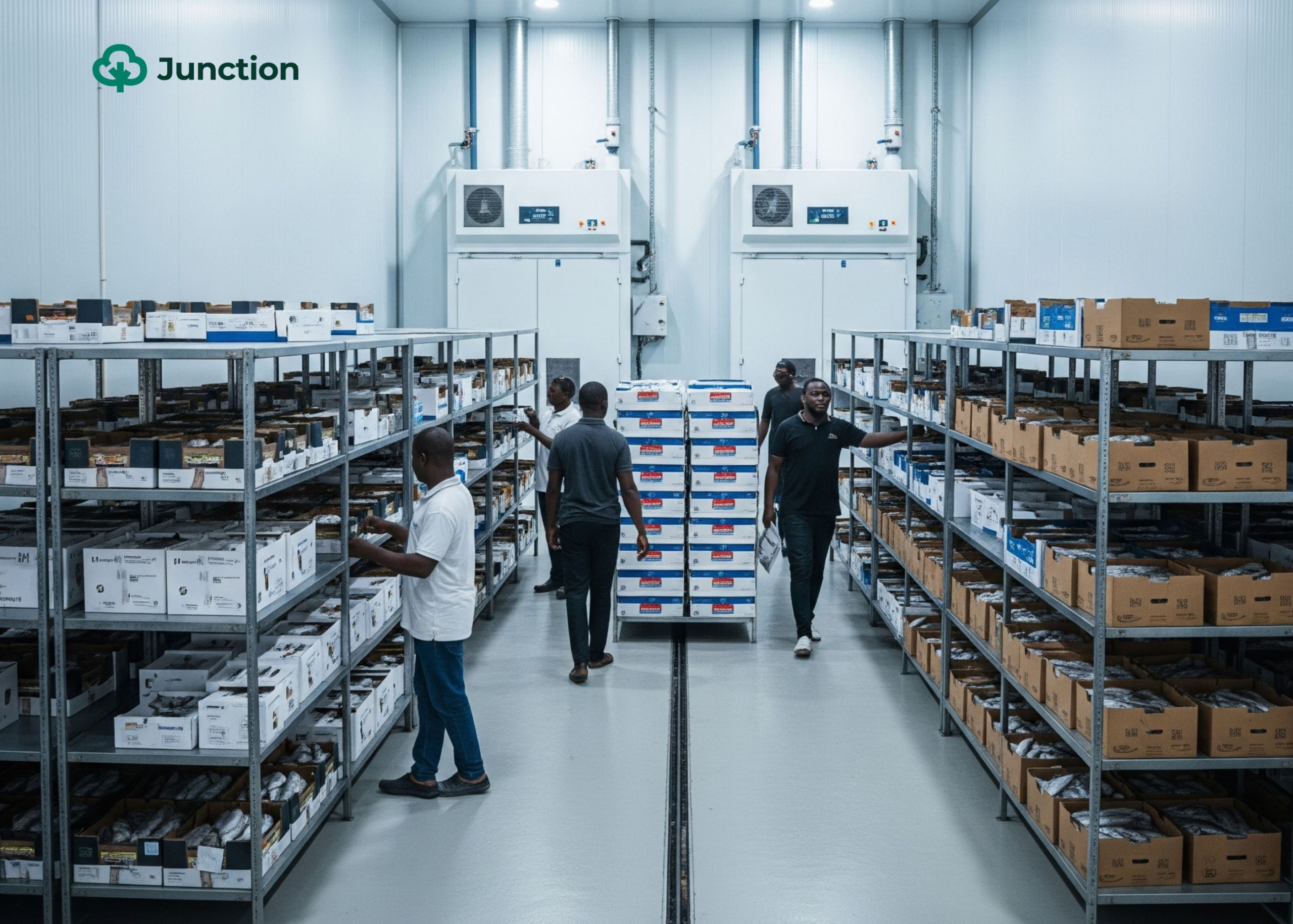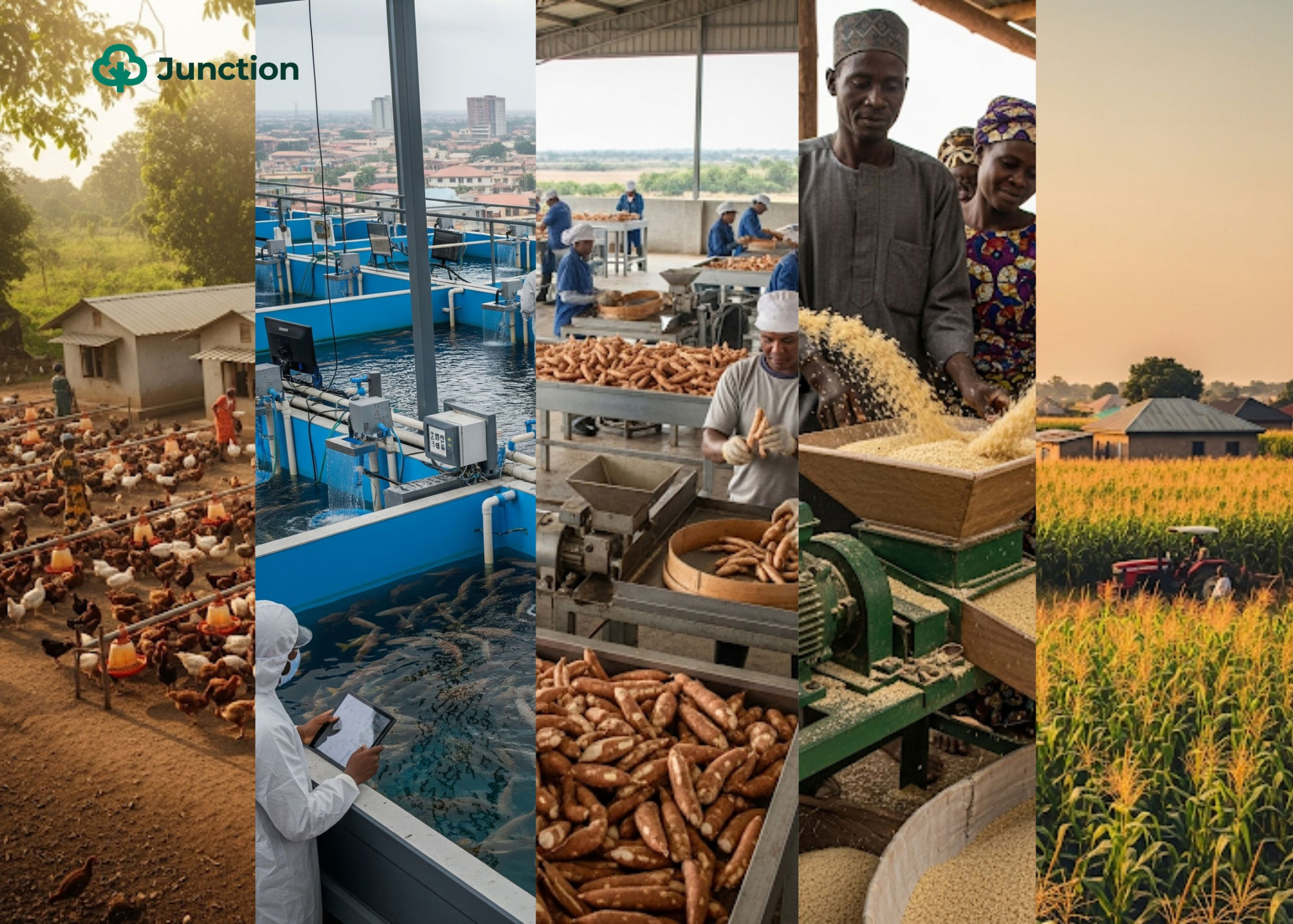Nigeria’s agricultural sector plays a vital role, contributing significantly to the country’s foreign exchange earnings. In 2023, it accounted for over 3% of exports, making it the second-largest export industry behind crude oil (80.64%).
For many years, cocoa, soybeans, sesame seeds, and ginger have been mainstays of Nigerian agricultural exports, and this trend continues. This article explores the top 10 agricultural products Nigeria exported in 2023 and delves into their production methods.
Top 10 Nigerian agricultural exports (2023)
- Superior quality cocoa beans (₦258.4 billion):

Cocoa beans come from plantations spread across Nigeria, particularly the southwestern region, which offers an ideal climate for the trees to thrive. Ripe cocoa pods are harvested by hand or hooked knives by farmers and hired hands. Then, the pods are broken to extract the beans, which are then fermented in heaps or boxes to develop chocolate flavour. The beans are dried in the sun or in specially designed sheds after fermentation to reduce moisture content and prevent spoilage. To obtain superior quality cocoa beans, producers apply strict quality control measures like more rigorous sorting and inspection to meet requirements. These cocoa products also contain richer, more complex flavour profiles thanks to their varieties.
- Sesamum (or sesame) seeds (₦253.7 billion):
Sesamum (or sesame) seeds with drought resistant characteristics are sown directly into the ground and manually harvested with sickles, which cut the stems without damaging the seed pods. The harvested plants are dried and threshed to separate the seeds from the pods. Exported seeds are cleaned more thoroughly than those meant for local consumption because international buyers have higher quality standards. After cleaning, they are packaged for exporting to countries like China, which was responsible for about 30.78% of Nigeria’s total sesamum seeds exports in 2023.
- Soya beans (excluding seeds) (₦120.1 billion):
Soya beans are typically ready for harvest between 100 and 150 days after they are planted, although the duration may vary according to varieties. When they mature, the pods are brown and dry, and harvesting can be done using cutlasses or sickles. In larger operations, farmers can deploy harvesters to reduce labour intensity. After harvest, the soya beans are dried in the sun or with mechanical dryers. Then, they are threshed to extract the beans. In the case of soya beans exports that do not include seeds, the beans are exported for oil extraction and processing into animal feeds.
- Cashew nuts in shell (₦110 billion):
In Nigeria, cashew nuts are harvested between March and May when they mature. The trees grow in several regions but mostly in the north and middle belt. Harvesting is primarily done manually with farmers and labourers picking the fruits as soon as they turn a reddish-yellow colour from green. The cashew nuts are attached to the bottom of the fruit, and producers separate them by hand using knives or machetes. Then, the nuts are dried in a dryer or on platforms under the sun. In this case, the nuts are left in the shell, stored and packaged for exporting.
- Standard quality cocoa beans (₦97.7 billion):
The major difference between standard quality cocoa beans and the superior quality type is the quality control measures applied. In this case, the producer does not go through a rigorous sorting and inspection process to meet requirements. Also, the varieties have basic flavour profiles. The beans produced from this process are usually worth less than in the case of the superior quality type.
- Other cut flowers & flower buds of kind suitable ornamental purposes (₦86.6 billion):
Cut flowers include roses, carnations, orchids, chrysanthemums, lilies, and others. They are harvested at the peak of bloom, that is, when they are most visually appealing and have a good vase life. Harvesting is done manually and carefully with sharp tools including shears or pruners to ensure that the cuts are clean and damage is minimal. After collecting the flowers, they are cooled to extend their vase life as this process slows down respiration and preserves water. Then, they are trimmed, bunched, and graded according to size, quality and colour for exporting.
- Cashew nuts shelled (₦84.2 billion):
After the cashew nuts are harvested and dried, they are shelled. It’s important to note that the shelling process can be dangerous due to cashew nut shell liquid (CNSL). CNSL is caustic and can irritate the skin. Therefore, manual shelling should only be done while wearing protective gear, and mechanized shelling is encouraged.
- Flours and meals of soya beans (₦63.2 billion):

After the soya beans are cleaned, producers can go further to dehull them by removing the outer hull of the seed. Dehulling makes it easier to grind the products and may be used for specific flour and meal products. Grinding can be done to reduce the product to fine flour or coarser soy meal. Hammer mills or roller mills are some popular tools used to complete this process in Nigeria. In addition, producers may apply heat treatment to deactivate enzymes and extend the shelf life of this product, especially when it are destined for exports. Finished flour or meal are typically packaged in moisture-proof bags or containers to prevent contamination.
- Natural cocoa butter (₦35.3 billion):
After cleaning and sorting the cocoa beans to remove debris and foreign objects, the process of making natural cocoa butter commences. First, the processor roasts the beans at controlled temperatures and timeframes to enhance its chocolate flavour and aroma. The roasted beans are then cracked and the shells are separated from the inner nibs through winnowing, a process that involves using air currents to remove smaller shell fragments. Next, the cocoa nibs are finely ground into a thick paste called cocoa mass, which contains cocoa butter, cocoa solids, and some residual shell fragments. To obtain cocoa butter, the processor engages a separation process. A hydraulic press can be used to exert high pressure on the cocoa mass and squeeze out cocoa butter fat. An expeller press can also be used to obtain the butter, and are more efficient for extraction because they add friction as well as pressure to the process. To remove impurities, the cocoa butter can be further purified and finally, the liquified cocoa butter is cooled and allowed to solidify at controlled temperatures. The solid cocoa butter can be packed in lock bars or other containers for storage and exporting.
- Other Frozen shrimps and prawns (₦21.2 billion):
Large volumes of Nigerian exported shrimps and prawns are obtained via wild capture in oceans, especially in the Niger Delta region, through the use of trawl nets dragged along the seabed. After trawling, the producers sort the catch and remove unwanted bycatch. Next, they wash and quickly freeze them to preserve their freshness and quality by using blast freezers. For exports, shrimps and prawns are packed in waterproof plastic bags and boxes and placed on pallets to make it easier to store and transport. Also, producers have to ensure that they adhere to standard requirements of their export destination like the Hazard Analysis and Critical Control Points (HACCP).
Highlights from Nigeria’s top 10 agricultural export products in 2023
The versatility of cocoa as an export crop is evident, appearing on this list in three forms and contributing a whopping ₦391.4 billion to Nigeria’s foreign earnings. The value of superior quality beans highlights the need for increased focus on that sector to ensure producers receive the best return on their investment.

Similar to cocoa, soya beans and cashew nuts appear multiple times on this list in various forms. This again demonstrates the numerous entry points for investors seeking to export crops. They can choose to expand their operations by processing raw produce, potentially profiting from less competitive industries.
Along the export value chain, aspects related with processing, storage and transportation, collectively called post-harvest activities, require more investments. These areas are where a significant portion of the country’s production is lost. Improving post-harvest practices can significantly improve foreign exchange inflows and boost the economy.



